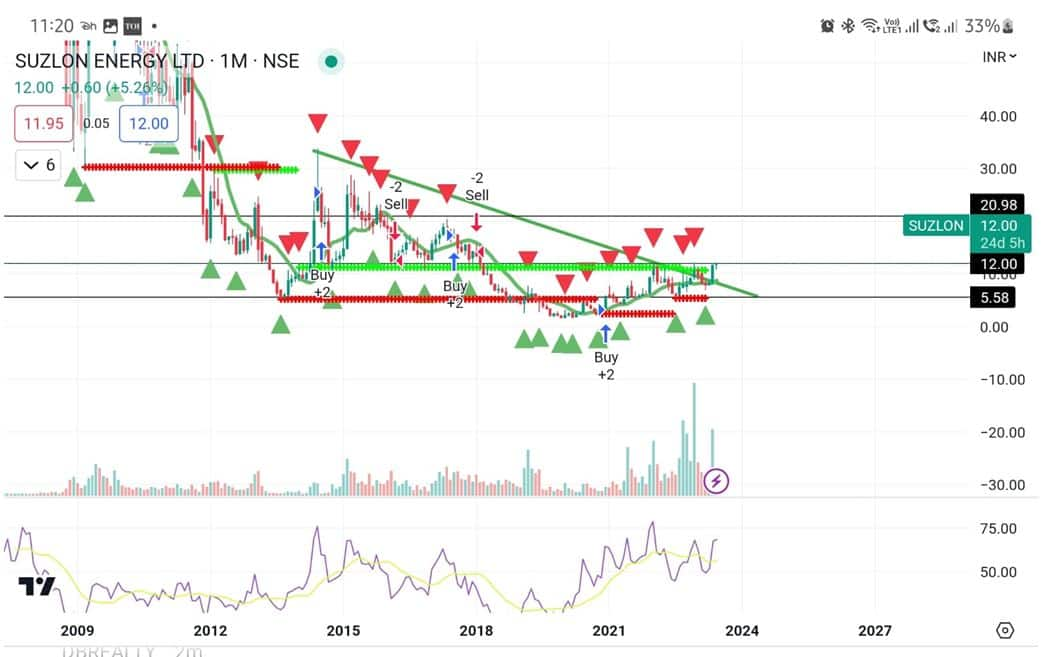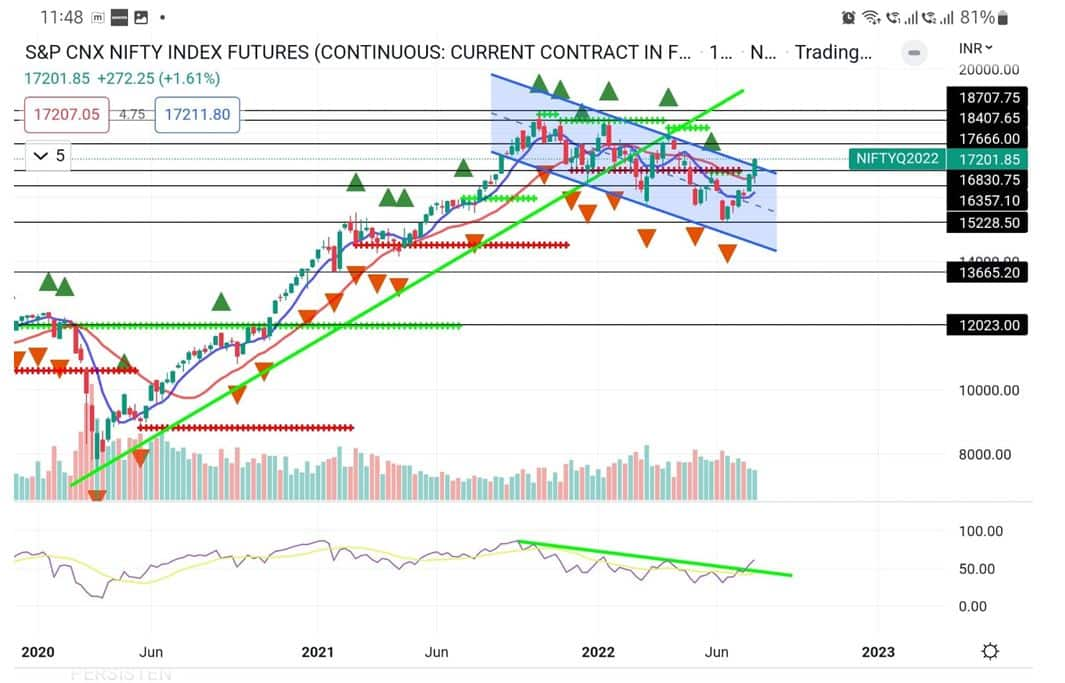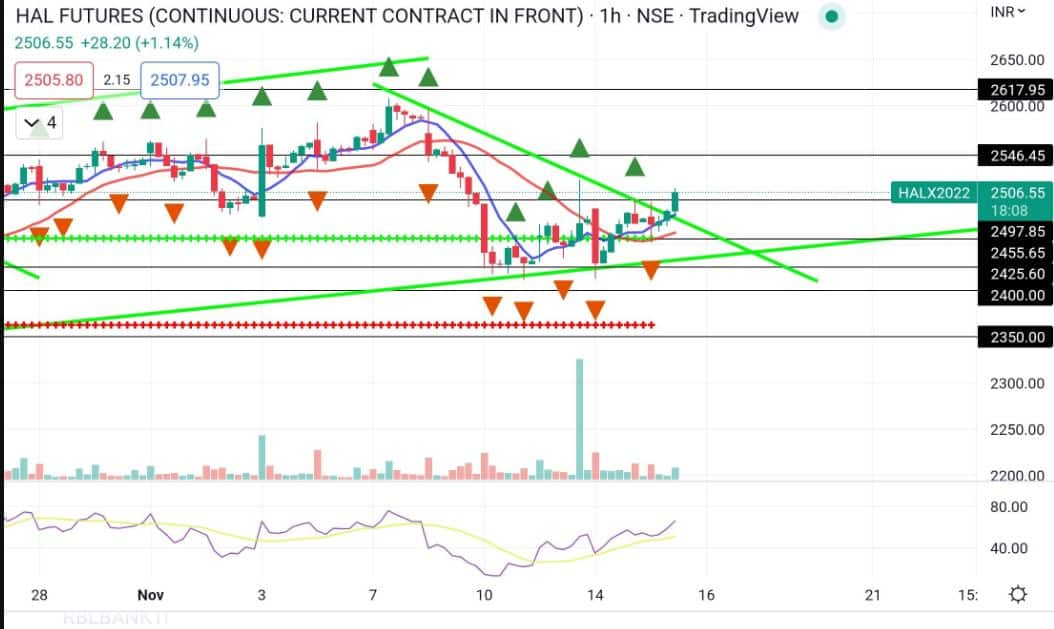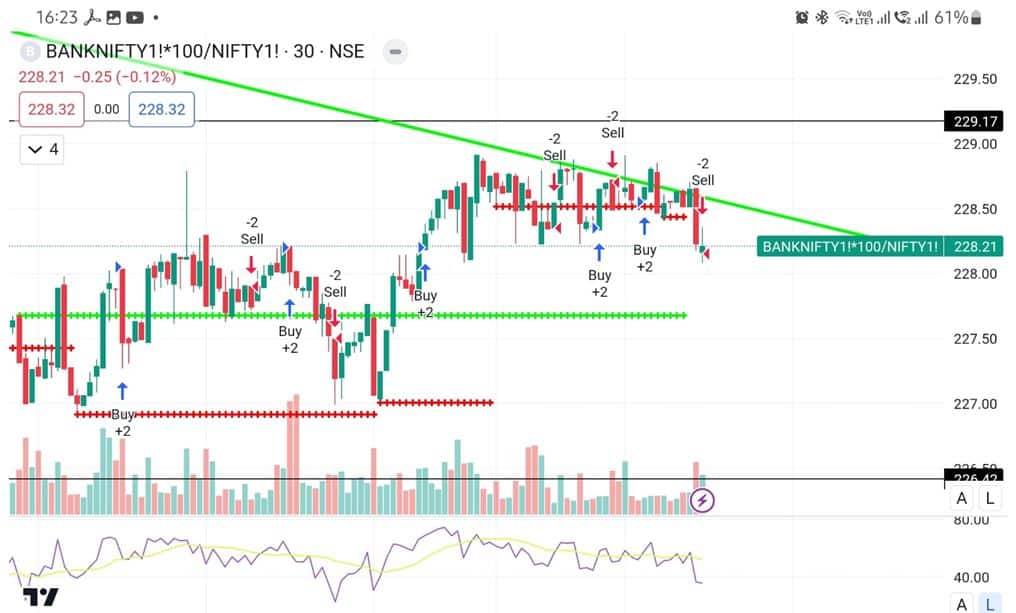Guruspeak| How Firoz used ChatGPT to turn into a profitable trader – Moneycontrol
My Account
Follow us on:
Find & Invest in bonds issued by top corporates, PSU Banks, NBFCs, and much more. Invest as low as 10,000 and earn better returns than FD
Invest Now
Powered By
Find safe & high-yielding bonds for your buck. Discover the right bonds meeting your investment amount & investment horizon
Invest Now![]()
AMBAREESH BALIGA
Fundamental, Stock Ideas, Multibaggers & Insights
Subscribe
CK NARAYAN
Stock & Index F&O Trading Calls & Market Analysis
Subscribe
SUDARSHAN SUKHANI
Technical Call, Trading Calls & Insights
Subscribe
T GNANASEKAR
Commodity Trading Calls & Market Analysis
Subscribe
MECKLAI FINANCIALS
Currency Derivatives Trading Calls & Insights
Subscribe
SHUBHAM AGARWAL
Options Trading Advice and Market Analysis
Subscribe
MARKET SMITH INDIA
Model portfolios, Investment Ideas, Guru Screens and Much More
Subscribe
TraderSmith
Proprietary system driven Rule Based Trading calls
Subscribe![]()
![]()
Curated markets data, exclusive trading recommendations, Independent equity analysis & actionable investment ideas
Subscribe
Curated markets data, exclusive trading recommendations, Independent equity analysis & actionable investment ideas
Explore
STOCK REPORTS BY THOMSON REUTERS
Details stock report and investment recommendation
Subscribe
POWER YOUR TRADE
Technical and Commodity Calls
Subscribe
INVESTMENT WATCH
Set price, volume and news alerts
Subscribe
STOCKAXIS EMERGING MARKET LEADERS
15-20 High Growth Stocks primed for price jumps
Subscribe
Trading can be stressful. When trades go well, the returns are generous but when losses hit, traders have few places to turn to. It’s a solitary profession, with each trader battling the market and their emotions daily. Only the strongest survive.
Delhi-based Firoz is one such trader (who prefers to be known by his first name). The passing of his mentor and trading partner after a tumultuous month in 2023 left him reeling. Firoz had focused on the psychological aspects of trading while his partner had concentrated on strategies. He did not have the same conviction in executing a trade as his partner. His life partner suggested he could take the help of the latest buzz in artificial intelligence – ChatGPT.
From the outset, Firoz was captivated. In just one weekend, he tried 50 trading strategies, using codes Chat GPT generated for his Trading View platform.
Although Firoz may not be as experienced a trader as others interviewed for this column on expert traders, he had all the elements in place except a working strategy. ChatGPT provided him with a quick-fix solution that has worked well.
When he is not playing around with his latest obsession in artificial intelligence, Firoz likes to either listen to music or test his brain with an online Chess duel, which he says is a strategic game and a great mental exercise.
In this interview with Moneycontrol, Firoz opens up on his journey and showcases his trading strategy.
Q: A brief educational and family background and your first steps toward the stock markets?
I come from a humble background. My father ran a small business in Bareilly and I graduated in commerce from Bareilly College in 2003. I first heard about stock markets during a motivational speaker’s visit to our government school in 1999. This experience marked the beginning of my lifelong journey into finance and investments.
My journey in the stock market has been quite eventful and transformative. It began in 2004 when I landed my first job at Sharekhan as a back office executive, which involved a lot of learning and understanding of stock market basics. It was an exciting time, and I was eager to absorb as much knowledge as possible. During this period, I developed an interest in trading and investing.
Over the years, I worked my way up through various roles within the industry. My dedication and commitment to learning and growing in this field eventually led me to become a branch manager at Religare, a significant milestone in my career. This role came with its challenges and responsibilities, but it also provided valuable insights into managing and leading teams within the financial sector.
After a successful stint at Religare, I decided to explore new opportunities. This decision led me to Nirmal Bang, where I took on the role of North India Equity Head. It was a period of significant growth for me as I contributed to establishing Nirmal Bang’s presence in North India. I continued honing my skills and expanding my financial market knowledge during this time.
However, life often has its twists and turns, and after a brief period outside the stock market, I decided to return to my roots just before the COVID crash.
I took up a franchise of Nirmal Bang and began working towards my passion again. It marked a fresh start in my journey, and I was determined to apply all the lessons I had learned over the years.
My experiences in the stock market have been diverse, and each role and phase has contributed to my growth and development as a trader and investor. It’s been a journey filled with challenges, opportunities, and, most importantly, a continuous quest for knowledge and improvement.
Q: How did you trade in your early days and how have you evolved as a trader?
In the early days of my trading career, my strategies were relatively straightforward and aligned with conventional trading approaches. I relied on fundamental analysis and market research to make my trading decisions. While these methods provided a foundation, I soon realised that I needed to evolve and adapt to the dynamic nature of the stock market.
With more experience and exposure to different market conditions, I began to explore more advanced trading strategies. I delved into technical analysis, learning to read charts and identify patterns and trends. This shift allowed me to make more informed entry and exit decisions, adding a new dimension to my trading approach.
Moreover, I recognised the importance of system-based trading and algorithmic trading. These technologies opened up new possibilities for me as a trader.
The evolution of my trading style is a journey from relying solely on fundamental analysis to incorporating technical analysis, system-based trading, and algorithmic strategies into my approach. This transformation has empowered me to adapt to changing market conditions and enhance the consistency of my trading performance.
At the beginning of 2022, I faced a challenging phase in my trading journey. Despite often having correct chart readings and setups, my emotions were causing me to lose more frequently than I should have. It was during this time that I became intrigued by algorithmic trading. An old friend introduced me to systematic trading and connected me with the Late Sanjay Sardana, who had successfully employed systematic trading strategies for over five years.
Sardana’s pair trading strategy, which involved shorting one index and buying another, piqued my interest. It marked the beginning of our automation journey, starting in January 2022 and continuing until February 2023. Sanjay Ji served as a mentor, and our partnership was a complementary one, with me focusing on trading psychology, an area he had mastered over the years. His guidance and encouragement were invaluable, especially during challenging market moments. He often reminded me to focus on the outcome of 100 or 1,000 trades, helping me maintain a long-term perspective.
Our partnership faced a significant setback on Budget Day in 2023 when a black swan event wiped out most of our gains from the previous 3-4 months, pushing our trading account into the red. Both of us were devastated and sought ways to navigate this difficult situation. The extreme market pressure and anxiety surrounding that period led to numerous reports of heart-related health issues among traders.
In the first week of February, Sardana and I were not feeling confident about the market, prompting us to close all positions temporarily for review and planning.
During our discussions about market-related stress, I mentioned my intention to visit a doctor, and Sardana agreed to do the same. However, the next morning, I received a call from his phone, but to my shock, it was his son informing me of his sudden passing due to heart failure.
It was a personal loss and a significant professional setback, as I was stranded without a clear direction for our automation strategy.
While I could copy Sardana’s trading style, I realised I couldn’t execute it with the same conviction because the ideas and logic behind it were not my own.
This was when I decided to learn Pine Script, a programming language used for creating custom indicators and strategies on trading platforms. I sought out help and watched tutorial videos to grasp the fundamentals. Towards the end of February, during a conversation with my wife, who runs a marketing agency and stays updated with the latest technology trends, I expressed my desire to create automated buy and sell signals using Pine Script. She suggested using ChatGPT to assist in writing the code.
I immediately tried it, and to my amazement, it worked. Over the weekend, I tested and backtested more than 50 different strategies, concluding that success in trading wasn’t just about the strategy itself but also about the person executing it. Every strategy had its share of good and bad trades, but what mattered most was the ability to manage risk and follow a disciplined process.
With this newfound confidence, I selected the simplest strategy that aligned with my trading and investing style. I started using it with the help of proper position sizing and risk management. As they say, the house always wins not because of its supply but due to effective risk management and process adherence. It marked a turning point in my trading journey, and I owe it in part to the innovative suggestion from my wife and the assistance of ChatGPT in coding my strategies.
Q: How do you presently trade?
My trading approach relies on chart analysis, using technical indicators and patterns to make informed decisions. It’s about maximising gains by identifying and capitalising on trends while minimising losses through strategic exits.
My current trading approach in Index combines system-based trading and technical analysis. I primarily focus on trading the Nifty and BankNifty, two major indices in the Indian stock market. My approach can be divided into different components:
System-Based Trading: I utilise a backtested trading strategy that provides predefined entry and exit signals. This strategy is based on technical indicators, historical price patterns, and volatility analysis. While it’s not fully automated, it provides a structured framework for making trading decisions.
Technical Analysis: I extensively use technical analysis tools and charts to assess market conditions and identify potential trading opportunities, which includes the analysis of candlestick patterns, moving averages, support and resistance levels, and trend lines. This approach is particularly useful when it comes to trading individual stocks. My criteria for stock selection involve fundamentals. Once identified, I adopt a top-down approach, starting from the Monthly to Daily charts. If a stock meets the criteria and attracts my attention, it goes on my watch list. I then use the system to analyse 30-minute charts for red or green signals to create positions.
Chart Analysis: I regularly analyse standalone charts of BankNifty and Nifty on a 30-minute scale. These charts help me gauge short-term price movements and fine-tune my entry and exit points.
While my trading approach is based on structured strategies, it’s essential to note that I also employ swing high/low methods to protect my positions. These methods serve as manual stop-loss mechanisms and add an element of risk management to my trading.
I continuously monitor market news and events that might impact the indices I trade. Additionally, I monitor global market trends, economic indicators, and corporate developments that can influence the Indian stock market.
My trading approach is data-driven, systematic, and adaptable to market conditions, allowing me to make informed decisions and manage risk effectively.
Here are some examples of my trades:
I identified a symmetrical triangle breakout in Suzlon at 12 and am still holding the stock. Suzlon2109
Suzlon2109
In Nifty I noticed a Nifty’s trend reversal at 17,200 along with a symmetrical triangle breakout on the weekly chart around the end of July.
HAL was identified at 2,400 levels which I continue to hold.
Another strategy I trade is based on Ratio Chart Analysis. During periods of market volatility, I prefer trading pairs based on the Ratio chart. It involves calculating the ratio between BankNifty Future and Nifty Future. It helps identify relative strength between these indices and provides valuable insights for trading decisions.
My average win-to-average loss ratio is approximately 1:1.5. About 48 percent of my trades have been winners, while the remaining 52 percent have resulted in losses.
It’s important to note that while the win percentage is below 50 percent, effective risk management and disciplined trading have allowed me to maintain a favourable risk-reward balance. Managing losses through manual and trail stop-loss techniques has been crucial in mitigating risks and preserving capital.
Q: A word of advice for new traders
My advice to new traders embarking on their journey in the stock market is rooted in the valuable lessons I’ve learned throughout my career:
Education is Key: Begin with a solid foundation in trading fundamentals. Invest time learning about financial markets, trading strategies, risk management, and market analysis. A well-rounded education is essential for success.
Patience and Discipline: Trading is not a get-rich-quick scheme. It requires patience and discipline. Avoid impulsive decisions, stick to your trading plan, and don’t let emotions drive your actions.
Continuous Learning: The financial markets are dynamic and ever-changing. Commit to continuous learning and adaptation. Stay updated on market developments, economic indicators, and emerging trends.
Risk Management: Protect your capital at all costs. Implement effective risk management strategies, including setting stop-loss orders and defining your risk tolerance. Never risk more than you can afford to lose.
Trading Plan: Develop a comprehensive trading plan outlining your objectives, strategies, and risk management rules. A well-defined plan will keep you focused and organised.
Long-Term Perspective: Approach trading with a long-term perspective. Consistency and gradual growth are key to sustainable success. Avoid the temptation of chasing short-term gains.
Emotional Control: Emotions can be detrimental to trading. Learn to control fear and greed. Algorithmic trading can help eliminate emotional bias in your decision-making.
Learn from Mistakes: Don’t be discouraged by losses or setbacks. Every trader experiences them. Instead, view them as opportunities to learn and improve. Analyse your trades, identify mistakes, and adapt.
Community and Mentorship: Consider joining trading communities or seeking mentorship from experienced traders. Learning from others’ experiences can accelerate your progress.
Consistency is Key: Finally, understand that consistent discipline and commitment to your trading plan will be your greatest allies. Stay focused on your long-term goals and remain dedicated to your journey in the stock market.
In summary, trading can be both rewarding and challenging. Success requires dedication, education, and the ability to adapt. Remember that a trader’s journey is a continuous learning experience, and every trade is an opportunity to grow and refine your skills.
Discover the latest business news, Sensex, and Nifty updates. Obtain Personal Finance insights, tax queries, and expert opinions on Moneycontrol or download the Moneycontrol App to stay updated!
Copyright © e-Eighteen.com Ltd. All rights reserved. Reproduction of news articles, photos, videos or any other content in whole or in part in any form or medium without express writtern permission of moneycontrol.com is prohibited.
You are already a Moneycontrol Pro user.